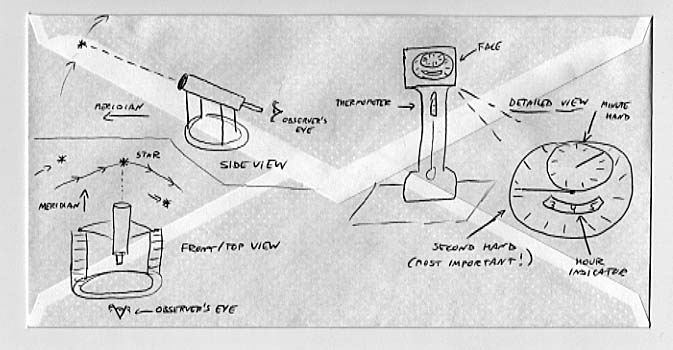|
An informal illustration of technology in action |
 |
|
Sketch by Jonathan Sills
|
|
Transit instruments were pivoted telescopes that allowed astronomers
to time the passage of a star over the meridian (an imaginary line
through the poles). As the heavens rotated, an astronomer would
look through the transit telescope (aligned in the meridian) and
note when a particular star crossed his field of vision.
At the precise moment that the star passed, the astronomer noted
the time via the ticking of a nearby astronomical regulator,
an accurate clock used specifically for timing these transit observations.
Without such measurements, the transit instrument wasn't able
to do its job.
Pinpointing the exact second the star crossed the meridian was crucial.
Hence the biggest hand on the astronomical regulator indicated seconds.
Each movement of the second hand was usually accompanied by a loud tick
to alert astronomers to the passing time.
A smaller interior face displayed minutes, and the hour was
read off a rotating inset display.
Since temperature affected the refraction of a star's light
through the earth's atmosphere, the astronomical regulator
also contained a thermometer to record the temperature.
Astronomers could then attempt to correct for the error.
Graham's astronomical regulator contained a special pendulum
that compensated for temperature to ensure the accuracy of the
clock.
VIEW A TRANSIT INSTRUMENT FROM THE MUSEUM'S COLLECTION
|